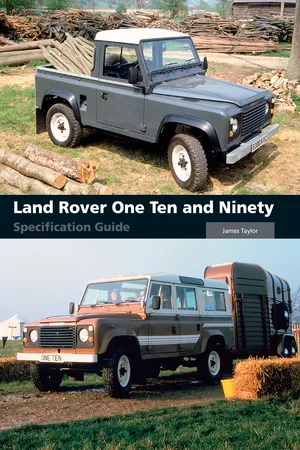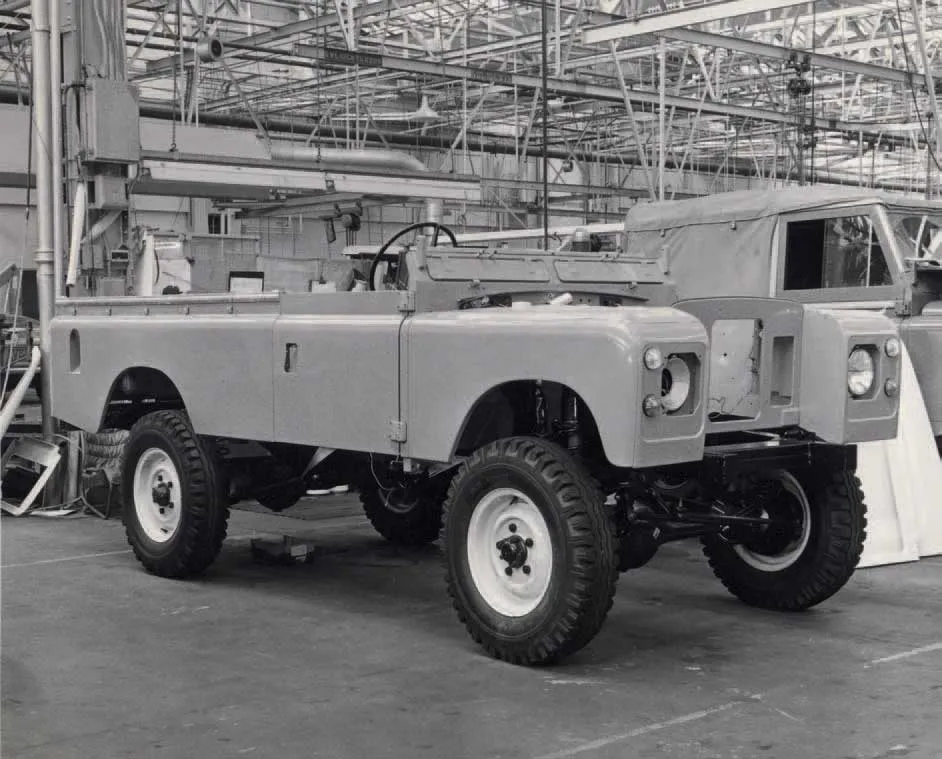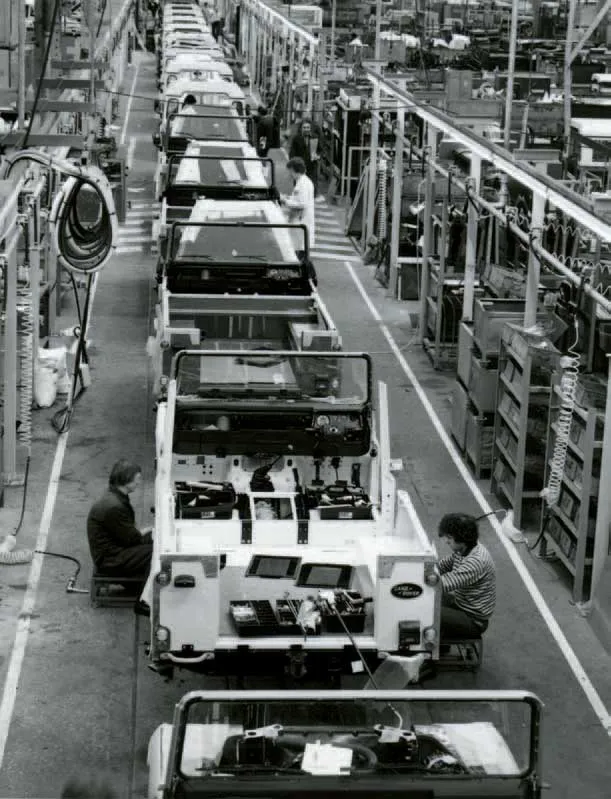
- 144 pages
- English
- ePUB (mobile friendly)
- Available on iOS & Android
eBook - ePub
Land Rover One Ten and Ninety Specification Guide
About this book
This book is designed to give guidance on the original, ex-factory, specifications of the coil-sprung utility Land Rovers built between 1983 and 1990. Known to Land Rover as stage 2 models, they were sold as the Land Rover One Ten, Ninety and (later) One Two Seven. James Taylor has taken the first step in undertaking detailed research into the Stage 2 models, and putting together all the known facts in one place. Topics covered include vehicle identification; specification changes in detail; options, accessories and special equipment; conversions and, finally, promotional material.
Frequently asked questions
Yes, you can cancel anytime from the Subscription tab in your account settings on the Perlego website. Your subscription will stay active until the end of your current billing period. Learn how to cancel your subscription.
No, books cannot be downloaded as external files, such as PDFs, for use outside of Perlego. However, you can download books within the Perlego app for offline reading on mobile or tablet. Learn more here.
Perlego offers two plans: Essential and Complete
- Essential is ideal for learners and professionals who enjoy exploring a wide range of subjects. Access the Essential Library with 800,000+ trusted titles and best-sellers across business, personal growth, and the humanities. Includes unlimited reading time and Standard Read Aloud voice.
- Complete: Perfect for advanced learners and researchers needing full, unrestricted access. Unlock 1.4M+ books across hundreds of subjects, including academic and specialized titles. The Complete Plan also includes advanced features like Premium Read Aloud and Research Assistant.
We are an online textbook subscription service, where you can get access to an entire online library for less than the price of a single book per month. With over 1 million books across 1000+ topics, we’ve got you covered! Learn more here.
Look out for the read-aloud symbol on your next book to see if you can listen to it. The read-aloud tool reads text aloud for you, highlighting the text as it is being read. You can pause it, speed it up and slow it down. Learn more here.
Yes! You can use the Perlego app on both iOS or Android devices to read anytime, anywhere — even offline. Perfect for commutes or when you’re on the go.
Please note we cannot support devices running on iOS 13 and Android 7 or earlier. Learn more about using the app.
Please note we cannot support devices running on iOS 13 and Android 7 or earlier. Learn more about using the app.
Yes, you can access Land Rover One Ten and Ninety Specification Guide by James Taylor in PDF and/or ePUB format, as well as other popular books in Technologie et ingénierie & Aviation. We have over one million books available in our catalogue for you to explore.
Information
| 1 | the life and times of the stage 2 Land Rovers |
‘Land Rover’s new Land Rover’ broke cover at the Geneva Show in March 1983, just under thirty-five years after the very first Land Rover had been displayed at the Amsterdam Show in 1948. It was an apt description, because the Land Rover had been subject to a process of slow evolution over those three and a half decades, but the one that was now being introduced really did represent something new.
Not that any of the traditional Land Rover qualities were discarded. This was still a tough and rugged workhorse vehicle with four-wheel drive that was intended to appeal to light industrial and agricultural users, and to emergency and military services the world over. In its Station Wagon forms it would appeal to the growing numbers of customers who felt they needed an all-terrain passenger-carrying vehicle: in County Station Wagon form, it would even offer a level of comfort that would have been unthinkable back in 1948.
FOUR ‘MULE’ PROTOTYPES
Development work had started in 1976 with a group of four ‘mule’ prototypes, based on Range Rover chassis that were variously extended or cut down to give alternative sizes. Body panels were Series III types, crudely adapted to fit the different wheelbases of the new models. The choice of Range Rover chassis as the basis of these prototypes was entirely deliberate, although the die-hards within the company could see no reason to change from the traditional Land Rover format. Among them was Land Rover’s chief engineer at the time.
Introduced in 1970 as an estate-car model with Land Rover capabilities, the Range Rover had swiftly demonstrated the superiority of its suspension and drive systems. It had long-travel coil-spring suspension, which gave a much more comfortable ride than the traditional Land Rover leaf springs. It had permanent four-wheel drive, which did away with the Land Rover driver’s need to choose whether two or four wheels needed to be driven in any set of circumstances. And it had all-round disc brakes that gave far better stopping power than the traditional Land Rover drum brakes. All-round discs was perhaps a step too far, but the new Land Rover would be developed with disc brakes on the front wheels.

The Range Rover chassis was the basis of the Stage 2 design.

The Range Rover was released in 1970 and reshaped the future of Land Rover as a marque.

First moves: one of the four ‘mule’ prototypes was built by marrying the body of a 109-inch Series III to a 110-inch coil-sprung Range Rover chassis, and adjusting here and there to make everything fit.
In the beginning there was some hesitation about the wheelbase sizes needed for the new models, and those first four experimental mules tried out three different ones. One was the 100in (2,540mm) wheelbase of the existing Range Rover; one subtracted 10in (225mm) from it to give 90in (2,286mm); and the third added 10in (225mm) to give 110in (2,794mm). The 110in size was readily accepted for the long-wheelbase models, and for the moment, the 100in size was chosen for the short-wheelbase variants.
Four 100-inch engineering prototypes were built in late 1977 and early 1978, and the first engineering prototypes of the 110-inch model followed in summer 1978. Over the next three years or so, doubts surfaced about whether the 100in (2,540mm) size was right for the short-wheelbase model. Eventually Land Rover decided that it was too close to the 110in (2,794mm) size, and reverted to a 90in (2,286mm) wheelbase. In the meantime, the 100-inch model had taken on a life of its own, as the sidebar explains.
This late decision to change to a 90in (2,286mm) wheelbase meant that the short-wheelbase development programme lagged behind the long-wheelbase programme. As a result, the 110-inch models were planned for release first, with the short-wheelbase models following a year or so later. Meanwhile, although a few short-wheelbase prototypes were built with a 90in wheelbase, new Chief Engineer Mike Broadhead thought a few extra inches would make a valuable difference, especially in the cab, and so a 92.9in size was settled for production. That apparently odd size came about because Land Rover was now working to metric dimensions, and the actual size chosen was 2,360mm.
During the 1970s, the Land Rover marque belonged to British Leyland, and that company was looking at various options for it, as one of the few profitable marques that it owned. By 1978, a plan had come together that involved separating Land Rover from its parent Rover car company and setting it up as an independently managed division. The plan gained government approval, and, more critically, government funding as well. Funds would be supplied in stages to support different projects, and the project for the new coil-sprung Land Rovers would be funded under Stage 2 of that funding. Not surprisingly, the new models gained the name of Stage 2 types within the company, although the name did not become well known to customers.
DEVELOPMENT AND PRODUCTION PROTOTYPES
Five more development prototypes of the long-wheelbase model were built in 1978, and in 1979 and 1980 forty-eight more test vehicles were built, to the planned production specification. These were known as FEP models (the letters stand for ‘fully engineered prototype’), and the figure of forty-eight was not coincidental: there had been forty-eight pre-production examples of the original Land Rover back in 1948! A larger batch of production prototypes followed in late 1982, and volume production of the new One Ten gradually built up in the early months of 1983. The new Land Rover was shown publicly for the first time at the Geneva Show in March, but most Land Rover publicity focused on its showroom availability from April, which was the 35th anniversary of the original Land Rover’s introduction.

Early One Ten models take shape on the lines as volume production builds up in early 1983.
Just as the new One Ten was announced in 1983, one of its key overseas markets had begun to collapse. Sub-Saharan Africa had always been a major market for Land Rovers, not least because government agencies bought large fleets and renewed them on a regular basis. However, changes in UK government subsidies at the start of the 1980s severely undermined this market, and Japanese competitors were quick to move in.

This cutaway drawing of the new One Ten was issued with the launch press release in 1983.

Panels were painted in sets that were mounted on a framework. Masking is being removed here, and the bright lights were designed to highlight flaws.
THE ONES THAT GOT AWAY (1) – THE 100-INCH
As soon as examples of the 100-inch Stage 2 model were available, Land Rover began to attract interest from military users. One of the prototypes was shown to the French Army, who asked for a small fleet for further trials.
As a result, the 100-inch model was further developed within the Military Engineering department, while the One Ten was being developed by mainstream Land Rover engineers. Work began in 1978 on a fleet of fifteen 100-inch military prototypes for French Army trials, and some were completed during 1979 to a specification requested by the Swiss Army. Neither set of trials resulted in a contract, and nor did an enquiry from the Danish military. By 1985 it was clear that there was no further need for the 100-inch model, and the twentieth and last prototype was completed during 1986.

Among the military 100-inch prototypes was this interesting four-door model with a full soft top.
THE FIRST ONE TENS
CWK-Y REGISTRATIONS
As explained in the text, a group of sixty-two production prototypes was built in October and November 1982. These were used for the press and dealer launches. Some became road-test vehicles and featured in magazines at the time. Several were later sold off to the public, and some still survive.
The registration numbers ran from CWK 2Y up to CWK 59Y, and then from CWK 82Y to CWK 85Y. Some numbers in the sequence were used for other vehicles: Ninety prototypes, Stage 1 V8 109s, Range Rovers, Austin Ambassadors, a Series III and even a Holden Jackaroo! Chassis numbers were not sequential but ran from 173074 (CWK 59Y) to 1...
Table of contents
- Cover
- Halftitle
- Title
- Copyright
- Contents
- introduction and acknowledgements
- Chapter 1 the life and times of the stage 2 Land Rovers
- Chapter 2 vehicle identification
- Chapter 3 chassis and running gear
- Chapter 4 engine and exhaust
- Chapter 5 transmission
- Chapter 6 body and electrical
- Chapter 7 interior
- Chapter 8 options, accessories and special equipment
- Chapter 9 conversions
- appendix: promotional material
- index